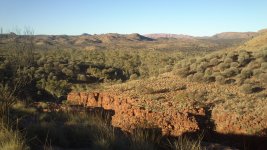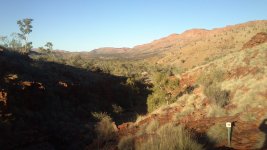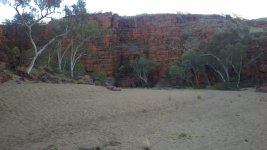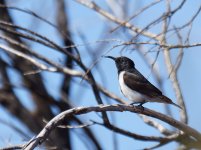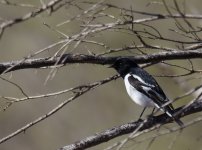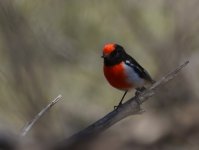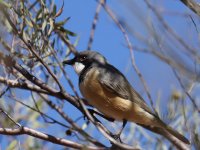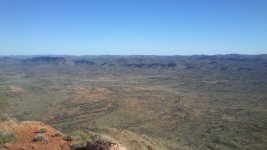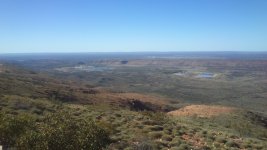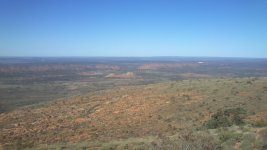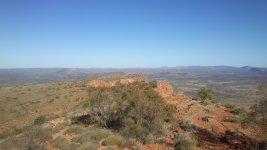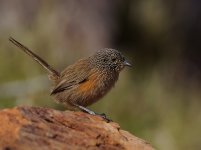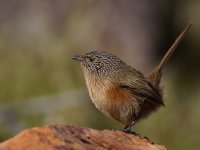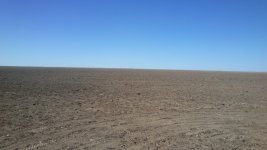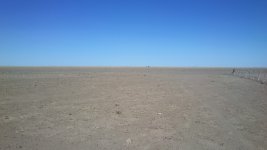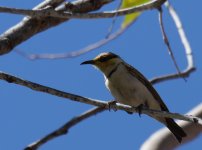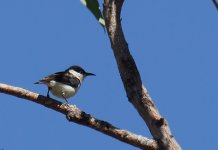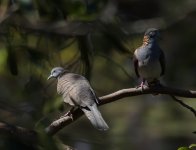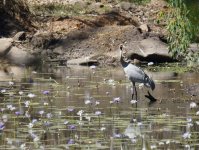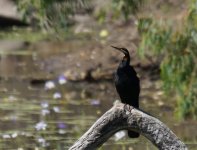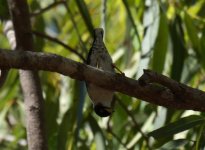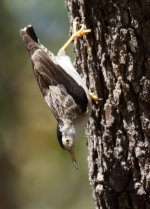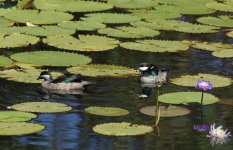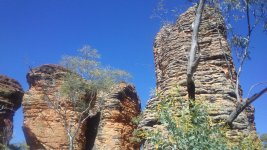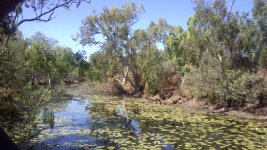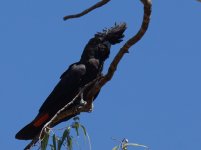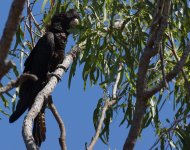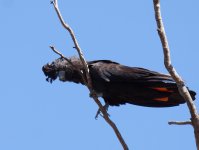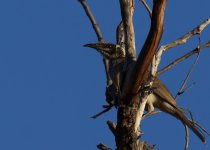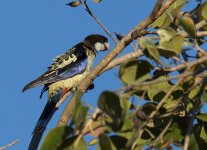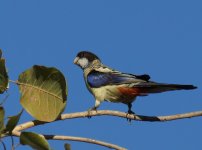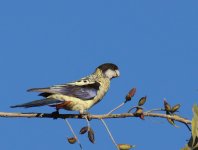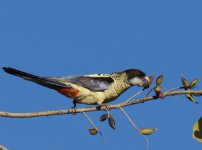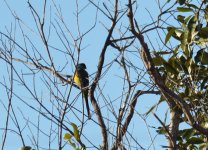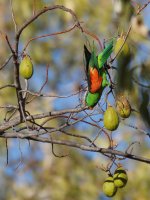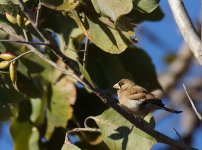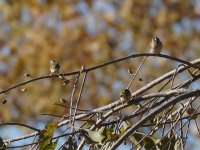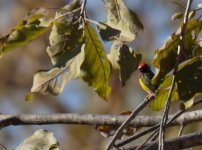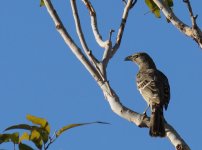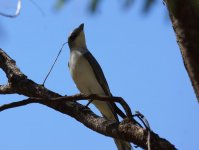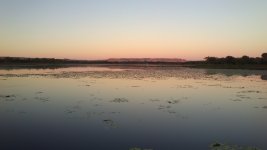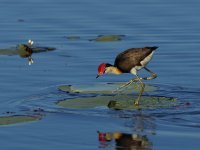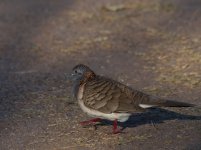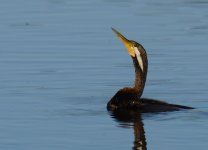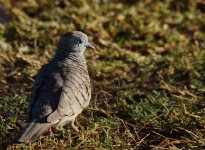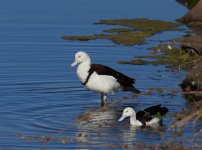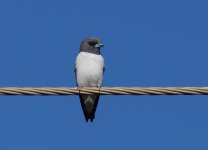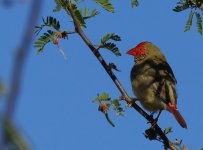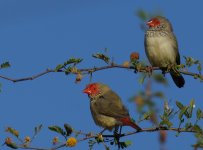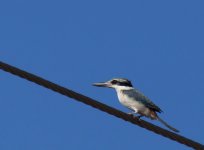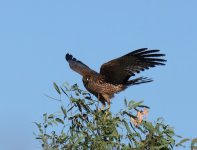
Day Thirty-six: Kunoth Bore – Trephina Gorge
Early in the morning I drove a little to the northwest of Alice Springs to Kunoth Bore and the nearby Hamilton Downs track. I had a near miss on the way when I almost ran over a Major Mitchell’s Cockatoo. Like many Australian parrots, it leads a happy life loafing about on roads, unconcerned with whatever might be hurtling toward it. Five more were at the bore along with a few ducks, including two Pink-eared Ducks.
I spent the rest of the morning along the Hamilton Downs track, which passes through varied mulga. The wind was surprisingly fresh and cool for much of the time, which seemed to diminish bird activity at first. In fact the first few kilometres of the track were rather birdless. After around 5km things picked up and there were plenty of flowering bushes to bring in the birds. Both Black and Pied Honeyeaters were easily found, their calls almost constantly within earshot. Other birds in the scrub included several Crimson Chats, Inland, Yellow-rumped and Chestnut-rumped Thornbills, numerous Rufous Whistlers, Red-capped and Hooded Robins, Splendid Fairy-wren, White-winged Triller and Southern Whiteface. A welcome surprise came mid-morning when a splendid group of five White-browed Woodswallows appeared. I’d been half-expecting these colourful and elegant birds through much of the trip and was beginning to wonder when they’d show up. I spent the rest of the morning trying to find thornbill flocks, which were generally lacking or small in size. Eventually searching around produced the species I was looking for: a single Slaty-backed Thornbill. It was quite furtive compared to the boisterous Chestnut-rumped Thornbills, scuttling low through the bushes.
In the afternoon I drove through the East McDonnell Ranges to Trephina Gorge. This was another rather spectacular spot. I didn’t see too much except for another rather obliging group of six Spinifex Pigeons – fast becoming a trip favourite.
I’d like to have stayed for the night but headed back to Alice Springs with a few plans for tomorrow.
Below, a few shots of Trephina Gorge.
Early in the morning I drove a little to the northwest of Alice Springs to Kunoth Bore and the nearby Hamilton Downs track. I had a near miss on the way when I almost ran over a Major Mitchell’s Cockatoo. Like many Australian parrots, it leads a happy life loafing about on roads, unconcerned with whatever might be hurtling toward it. Five more were at the bore along with a few ducks, including two Pink-eared Ducks.
I spent the rest of the morning along the Hamilton Downs track, which passes through varied mulga. The wind was surprisingly fresh and cool for much of the time, which seemed to diminish bird activity at first. In fact the first few kilometres of the track were rather birdless. After around 5km things picked up and there were plenty of flowering bushes to bring in the birds. Both Black and Pied Honeyeaters were easily found, their calls almost constantly within earshot. Other birds in the scrub included several Crimson Chats, Inland, Yellow-rumped and Chestnut-rumped Thornbills, numerous Rufous Whistlers, Red-capped and Hooded Robins, Splendid Fairy-wren, White-winged Triller and Southern Whiteface. A welcome surprise came mid-morning when a splendid group of five White-browed Woodswallows appeared. I’d been half-expecting these colourful and elegant birds through much of the trip and was beginning to wonder when they’d show up. I spent the rest of the morning trying to find thornbill flocks, which were generally lacking or small in size. Eventually searching around produced the species I was looking for: a single Slaty-backed Thornbill. It was quite furtive compared to the boisterous Chestnut-rumped Thornbills, scuttling low through the bushes.
In the afternoon I drove through the East McDonnell Ranges to Trephina Gorge. This was another rather spectacular spot. I didn’t see too much except for another rather obliging group of six Spinifex Pigeons – fast becoming a trip favourite.
I’d like to have stayed for the night but headed back to Alice Springs with a few plans for tomorrow.
Below, a few shots of Trephina Gorge.




